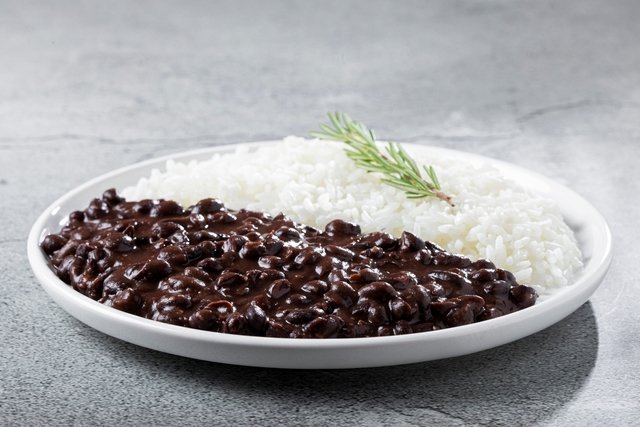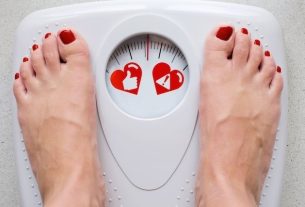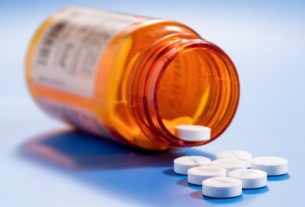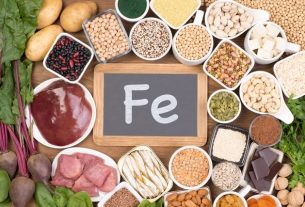Rice and beans are an excellent source of protein, as they provide all the essential amino acids to maintain health, help with muscle mass gain and produce some hormones.
Furthermore, rice and beans are rich in fiber, vitamin B9, magnesium, phosphorus and manganese, nutrients that promote weight loss, good bowel function, prevention of anemia and osteoporosis, for example.
As it is a combination that provides a protein of high biological value, rice and beans can replace proteins found in foods of animal origin, such as eggs, chicken and dairy products.

Are rice and beans a good source of protein?
Rice and beans are a good source of proteins of high biological value, because this combination provides all the essential amino acids for the body to function.
This happens because rice is rich in the amino acid methionine, while it does not contain lysine. Beans do not have methionine, but they do contain lysine. Therefore, this combination is an excellent source of plant-based proteins.
Main benefits
The main health benefits of consuming rice and beans are:
1. Promote weight loss
This combination favors weight loss, because rice, especially brown rice, and beans are rich in fiber, which increases food digestion time and helps control hunger throughout the day. Discover more foods that help you lose weight.
However, to lose weight it is also essential to maintain a healthy and varied diet and exercise regularly.
2. Help with muscle mass gain
Rice and beans help to gain muscle mass as they are a good source of high biological value proteins, which are essential for muscle formation. See more foods recommended for gaining muscle mass.
Furthermore, rice and beans also contain carbohydrates, a nutrient that provides the energy needed during training, improving physical performance.
3. Control diabetes
As it is a combination rich in fiber, rice and beans help reduce the speed at which carbohydrates are absorbed, balancing blood glucose levels and helping to control diabetes.
4. Prevent anemia
Rice and beans help prevent anemia, as they provide excellent amounts of folic acid, or vitamin B9, a vitamin that acts in the formation of blood cells, including red blood cells, platelets and white blood cells. Check out some foods rich in folic acid.
In addition, this combination also contains iron, a mineral that participates in the production of hemoglobin, one of the components of red blood cells that transports oxygen in the body and which is generally reduced in anemia.
5. Fight constipation
Fiber, which is present in excellent quantities in rice and beans, helps combat constipation, because it increases the volume of feces and improves intestinal transit, facilitating evacuation.
6. Prevent premature aging
Being an important source of proteins of high biological value, rice and beans maintain skin health, promoting the formation of collagen and preventing the appearance of wrinkles, sagging and premature aging.
7. Control blood pressure
Rice and beans are rich in magnesium and potassium, minerals that promote relaxation of the arteries, facilitating blood circulation, in addition to eliminating excess sodium from the blood.
8. Prevent osteoporosis
Because they contain excellent amounts of minerals such as magnesium and manganese, rice and beans help in the formation of bones and cartilage, in addition to promoting the concentration of vitamin D in the body, being essential for preventing osteoporosis.
Do rice and beans make you fat?
When consumed in moderation, rice and beans do not make you fat. This is because this combination is rich in fiber that promotes satiety and helps control hunger, making it a great option to include in weight loss diets.
However, because they contain carbohydrates, rice and beans can make you fat when consumed in large quantities. Furthermore, preparations that contain a lot of calories, such as beans with bacon and/or sausage, and rice with a lot of oil, can also promote weight gain.
Nutritional information table
The following table provides nutritional information for 140 g of rice and beans, containing 3 tablespoons (75g) of brown rice and 1 small scoop (65g) of cooked black beans:
To obtain all the benefits from consuming rice and beans, it is also essential to maintain a healthy, balanced diet and exercise regularly.
How to consume
Rice and beans can be consumed daily for lunch and/or dinner. Rice and beans should preferably be consumed together with vegetables, and can also be accompanied by other proteins such as eggs, chicken, tofu or fish.
In addition to rice and beans, there are also several other types of healthy cereals and legumes, such as corn, quinoa, lentils, chickpeas and soybeans, which when combined, also provide high biological value proteins and essential nutrients.
The recommended amount of rice and beans in the diet varies depending on each person’s weight, health status and physical activity. Therefore, it is advisable to always consult a nutritionist to carry out a general assessment and recommend an individualized meal plan.

Sign up for our newsletter and stay up to date with exclusive news
that can transform your routine!
Warning: Undefined array key "title" in /home/storelat/public_html/wp-content/plugins/link-whisper-premium/templates/frontend/related-posts.php on line 12
Warning: Undefined array key "title_tag" in /home/storelat/public_html/wp-content/plugins/link-whisper-premium/templates/frontend/related-posts.php on line 13



